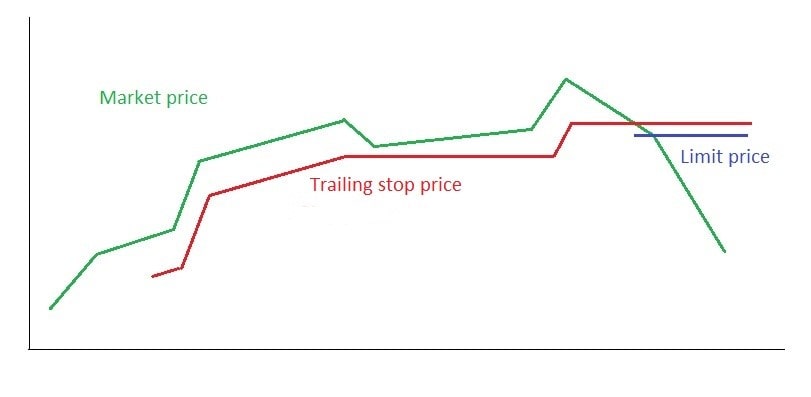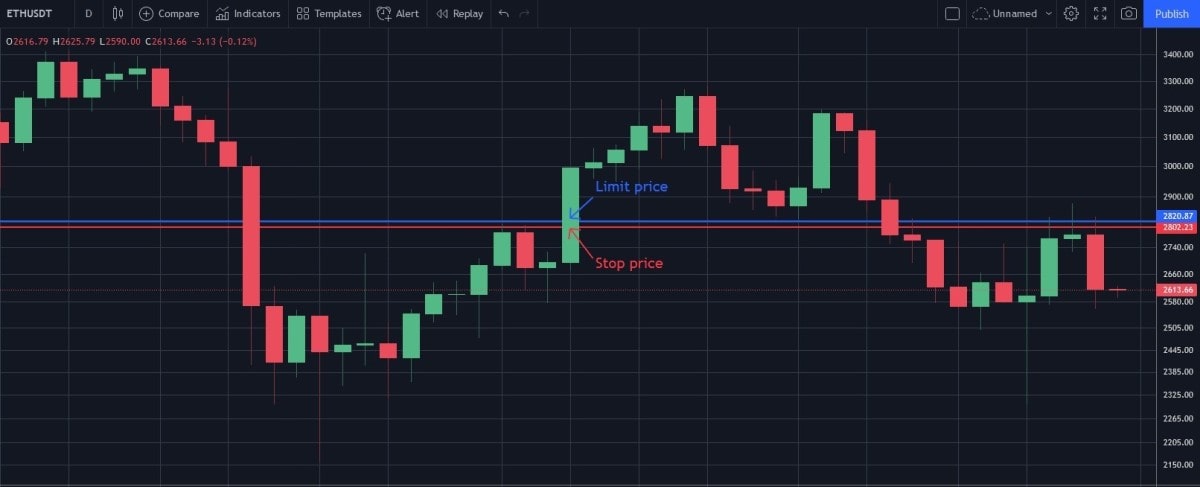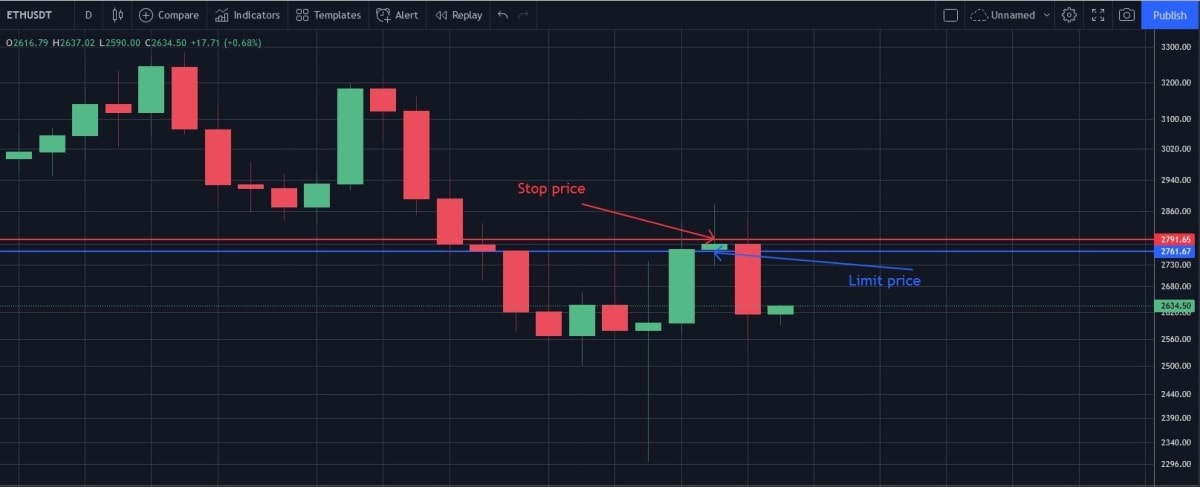What is a stop-limit order in crypto?

Any novice trader, sooner or later, inevitably has the question: "What is a stop-limit order?". In this article, we'll tell you about this important trader's tool, how it differs from other types of orders and give examples of stop-limit orders.
What is a stop-limit order?
A stop-limit order is a type of trade order. A stop-limit order combines a stop order with a limit order. When the price of an asset reaches the stop price set by the trader, it automatically triggers a limit order. The limit order is then executed at the set limit price or better.
What does a stop-limit order mean?
Since a stop-limit order is a combination of a stop order and a limit order, you need to know what a stop order and a limit order are to see how it works.
- A stop order, also called a stop-loss order, is an order to buy or sell an asset after its price reaches a certain value (the so-called stop price). When a stop order is triggered, the asset is bought or sold at the current market price, which can differ from the stop price (this effect is called slippage).
- A limit order is an order to buy or sell an asset at a specific price or better.
Thus, to set a stop-limit order, you must set two prices:
- Stop price. This is the trigger price at which a limit order will be placed. If the price of the asset doesn't reach the stop price, the limit order will not be placed.
- Limit price. Once the stop price triggers a limit order, it will be filled at that price or better.
Types of stop-limit orders
There are two varieties of stop-limit orders: buy stop-limit orders and sell stop-limit orders.
Besides, there's a type of stop-limit and stop order called a trailing stop order. A trailing stop order is a stop or stop-limit order where the stop price is not set at a specific price level but rather at a certain distance (as a percentage or unit of currency) from the current price of an asset. If the market price of an asset changes in a favourable direction, the stop price will also change following it. However, if the market price changes in an unfavourable direction, the stop price doesn't change and if the market price reaches the stop price, the stop order is triggered.

What is a stop-limit order to buy?
A stop-limit buy order is placed above the asset's market price. It's often used when the trader is expecting a breakout through a significant resistance level. In this case, the stop price is placed at the resistance level, and the limit price is placed just above the resistance level. It's also used in short trades to reduce losses if the price starts to move in an unfavourable direction.
Stop-limit order to buy example
Suppose you expect the price of ETH to rise sharply when it breaks through the $2,800 resistance level. In this case, you would set the stop price at $2,800 and the limit price at $2,820. Thus, in case the market price of ETH reaches $2,800, a limit buy order will automatically be placed at $2,820. If the price is still below $2,820 at that point, the limit order will automatically be executed at the market price. However, if the price rises too quickly, then this order may not be filled completely or may not be filled at all. In this case, it will remain active until the price falls back to $2,820.

What is a stop-limit order to sell?
A stop-limit sell order is placed below the asset's market price. It's usually used in long trades to reduce losses if the price starts moving in an unfavourable direction and in short trades when waiting for the price to break an important support level.
Stop-limit order to sell example
Suppose you buy one ETH for $2,800 in the expectation that the price will rise. The current market price is $2,850. However, you anticipate that the price may return to the support level of $2,800 and bounce back from it, but you fear a possible breakdown of the support level and a trend reversal. You place a stop order at $2,790 and a limit order at $2,770. If the price declines and breaks through $2,800 to reach $2,790, you place a limit order to sell at $2,770. If the price decreases too quickly, the order may not be filled. In this case, it will remain active until the price reaches $2,790 again.

Stop-limit order vs limit order
A limit order sets the minimum price at which a trader is willing to sell an asset or the maximum price at which a trader is willing to buy it. Unlike a stop-limit order, a limit order is placed immediately rather than when a certain price is reached. In addition, a stop-limit order is not visible in the order book until the stop price triggers the placement of a limit order. A limit order is visible in the order book immediately.
Stop-limit order vs stop-loss
A stop-loss order is similar to a stop-limit order because its purpose is to minimise losses in the event of an unfavourable price movement. However, the difference between the two becomes apparent when the price reaches the stop. In the case of a stop-loss order, when it happens, the position is closed immediately at the market price. A stop-loss order is easier to use but gives you less control over the price at which the asset will be bought or sold. If there is a sharp price change, the order can still be executed, even at a much less favourable price than the price specified in the order.
Advantages and disadvantages of a stop-limit order
A stop-limit order is a very useful trader's tool with a number of advantages:
- A stop-limit order allows you to automate the trading process and use your time more efficiently. With it, a trader doesn't have to follow the market all the time and can spend that time on something else.
- A stop-limit order is an important risk management tool to minimise losses when things don't go according to your plan.
- Because it is automatically executed, the stop-limit order reacts much more quickly to changes in market conditions than it can be done manually.
The main disadvantage of a stop-limit order is that it doesn't guarantee complete protection against losses. For example, if there are sharp price movements, especially when trading low-liquid assets, a stop-limit order may not be executed at all due to slippage, i.e., when the trader receives a different trade execution price than the intended one.
Tags
Try our Bitcoin Cloud Miner and get additional crypto rewards based on your trading volume. It's immediately available upon registration.
Try our Bitcoin Cloud Miner and get additional crypto rewards based on your trading volume. It's immediately available upon registration.



